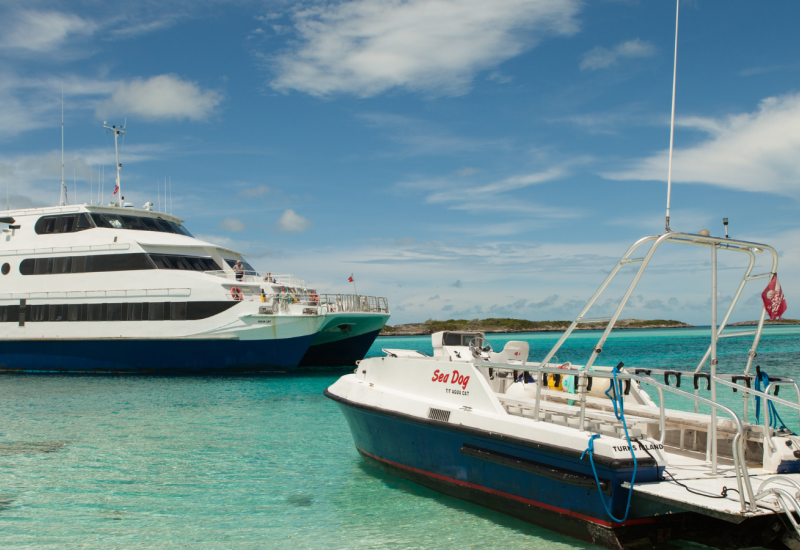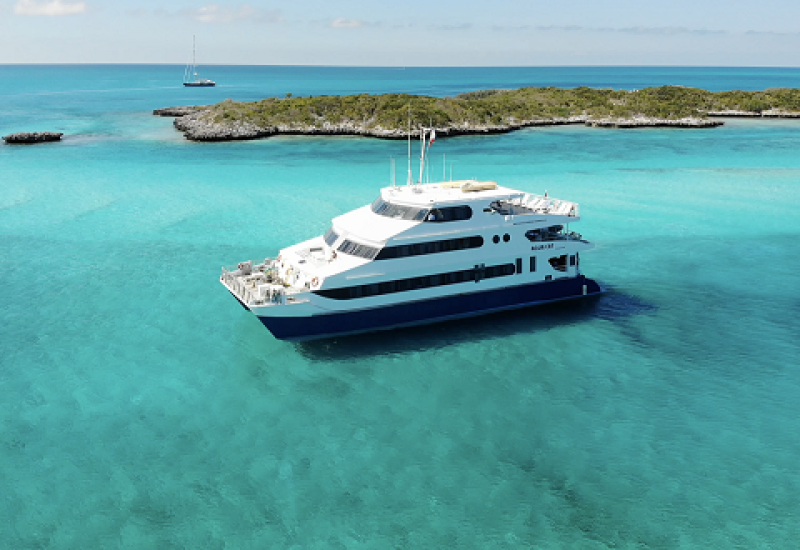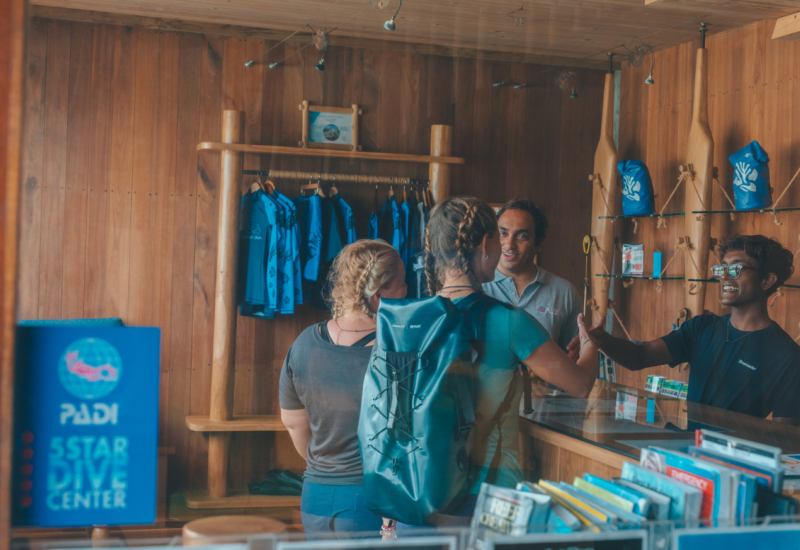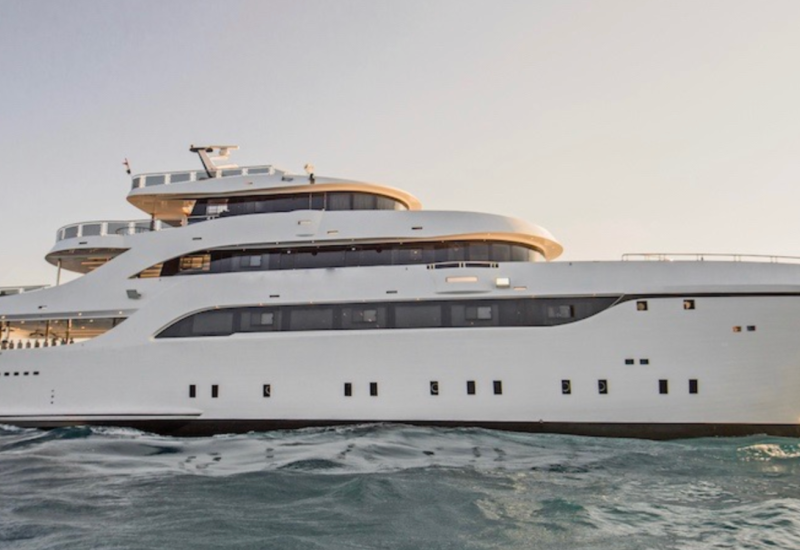Diving from the Aqua Cat
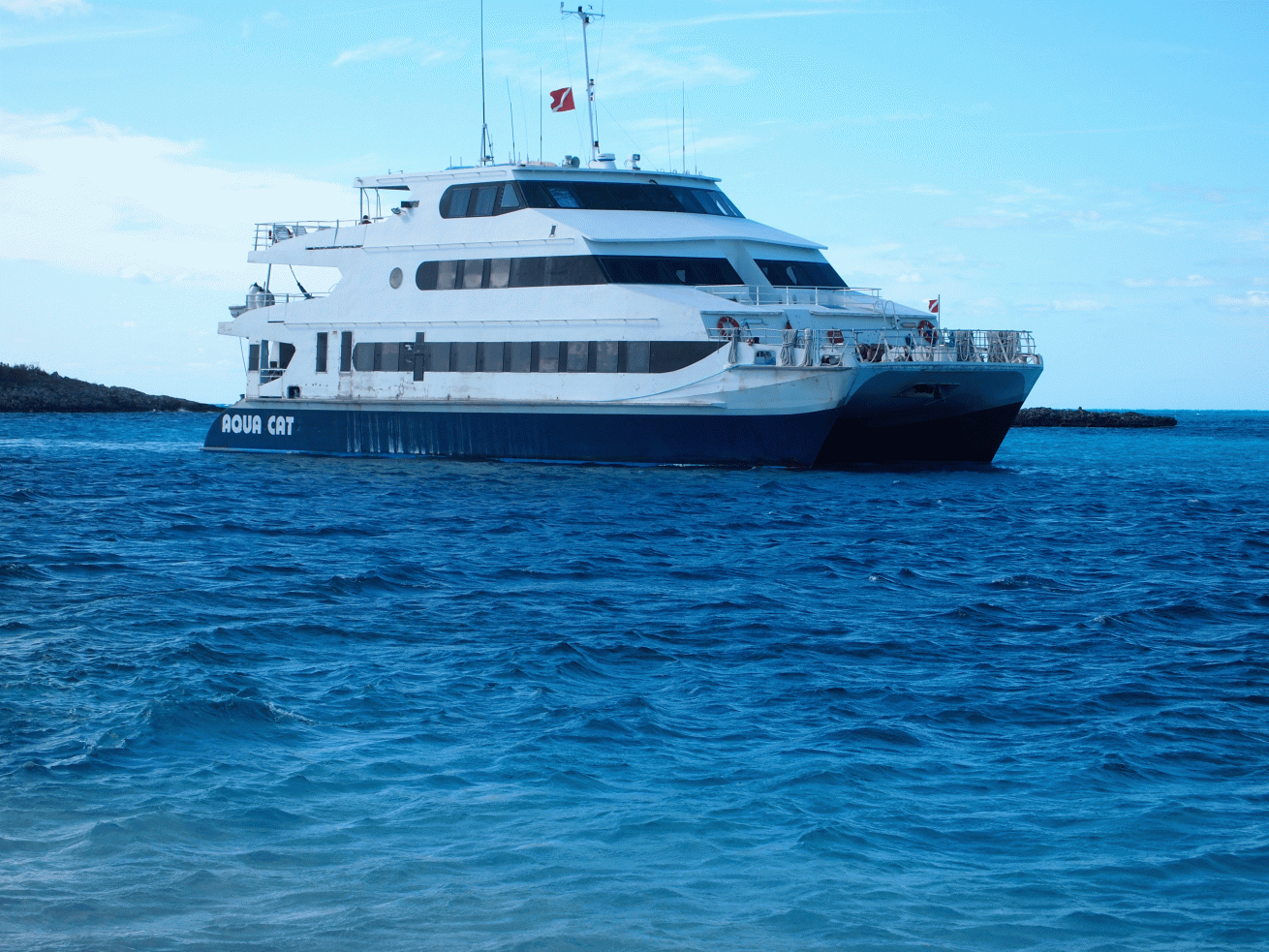
Even in January, with water temps in the Atlantic in the low 70sF, diving in the Exuma Cays and Eleuthera aboard the luxury live-aboard_ Aqua Cat_ is a delightful experience. We'll be reporting on the itinerary and the vessel in our June 2012 issue, but we wanted to give you a sneak preview.
Trip Report: Aqua Cat Live-aboard Trip
My name is Patricia Wuest and I am a Princess Diver. Yes, I admit it. Shape magazine recently reported that celebs like Jessica Alba, Sandra Bullock, Katie Holmes and Nina Dobrev of the CW show The Vampire Diaries love diving because it burns tons of calories while tightening and toning your body. You can debate whether diving actually does burn calories — PADI says 400 calories on a typical dive — but I typically prefer someone else burning those calories when I dive. Not only do I move very slowly underwater, I'd rather let someone else shlep my gear. The cliche often recited about live-aboard diving — eat, dive, eat, dive, eat, dive, sleep, repeat — is very true, but what's not mentioned is how lazy that routine is when the crew is as hard-working, helpful and fun-loving as the crew aboard the luxury live-aboard catamaran Aqua Cat. The spacious, 102-foot-long Cat departs from Nassau, Bahamas, year-round to pristine sites off the stunning Exuma Cays and Eleuthera. A blog can't really do this experience justice, but I'm gonna try.

The Aqua Cat has a few itineraries it can make — and countless variations on those — depending on the weather and interest of the guests. Our week is spent primarily diving off Eleuthera, but we begin in the Exumas.
Our first dive is a checkout dive at Flat Rock Reef, a nice shallow dive in 25 feet of water where we can test the water's cooler temperatures (it's January, and even in the Bahamas, winter water temps dip down to the low 70s F) and sort out weighting issues. The site is aptly named — Flat Rock is a shallow sand and eel-grass bottom with a scattering of coral heads to keep divers busy.
Afterward, we make a quick side trip aboard Majik (Aqua Cat's 28-foot inflatable chase boat) to nearby Allen's Cay. The cay is home to the Allen Cays rock iguana, an endangered subspecies of the Northern Bahamian Rock Iguana that is found here and on adjacent Leaf Cay. Its population is down to about 1,000 animals. We bring them grapes that we attach to twigs and feed a small gathering of them on the beach. After we're back on board, Capt. Mark Bailey heads east for the three-hour crossing to the "foot" of Eleuthera, the southernmost, foot-shaped section of the island.
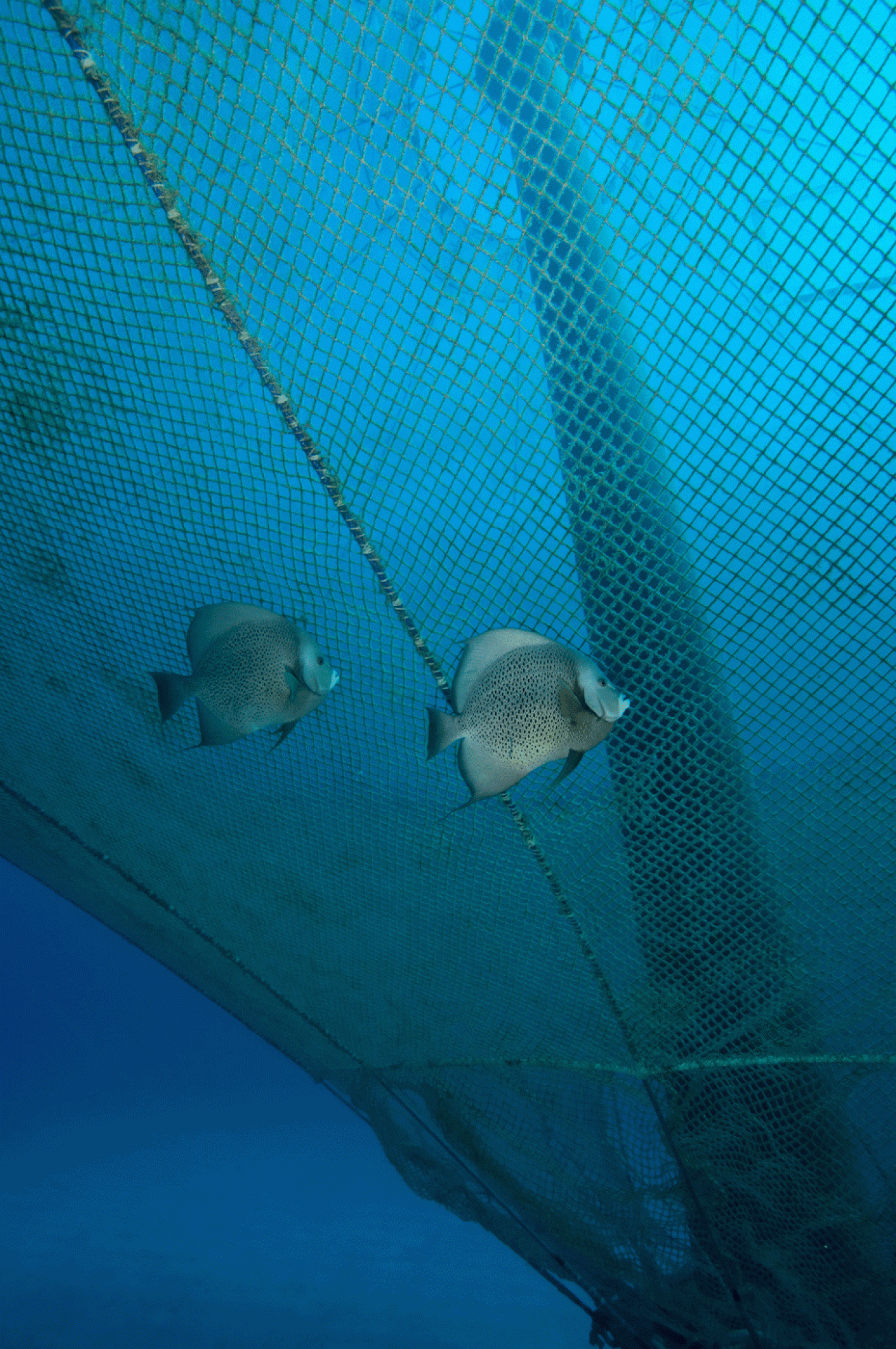
Eleuthera
Like a parenthesis on the water, Eleuthera is 110 miles long, pencil-thin (only a mile wide in parts) and about 50 miles from Aqua Cat's dock in Hurricane Hole Marina on Paradise Island, just across the bridge from Nassau.
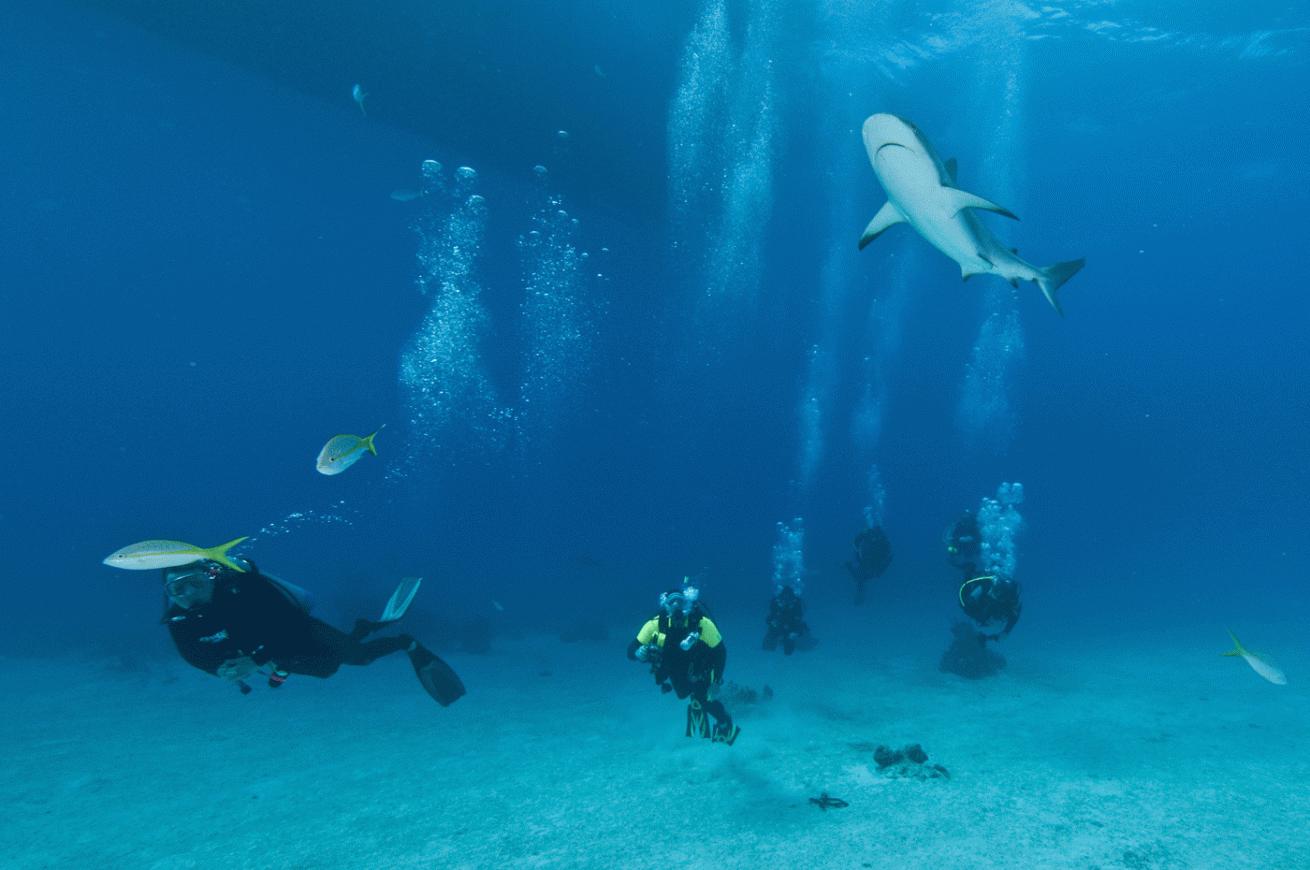
After the restful crossing (lots of catnaps on the Aqua Cat's spacious sundeck), our second dive is in the afternoon, at Hole in the Wall, which offers both a shallow reef with a huge coral mound (in 45 feet of water) or a wall dive that can be accessed via a good-size swim-through in the reef at 70 feet that you can drop down into. When you exit, you're on the wall at about 90 feet. Out in the blue, you have the chance to spot just about anything, though turtles and eagle rays are the most common encounters. Two weeks after we left, I got an email from Aqua Cat's photographer, Aleksandra Bartnicka (some of her work is featured in the photo gallery above), who said they had an in-water encounter with a whale shark and a humpback whale. Drats! As Capt. Mark Bailey told me, "You never know what you might see on any given day — turtles, sharks, whales, dolphins." Trust me, this crew is so happy and dedicated because they truly love diving and the work they're doing.
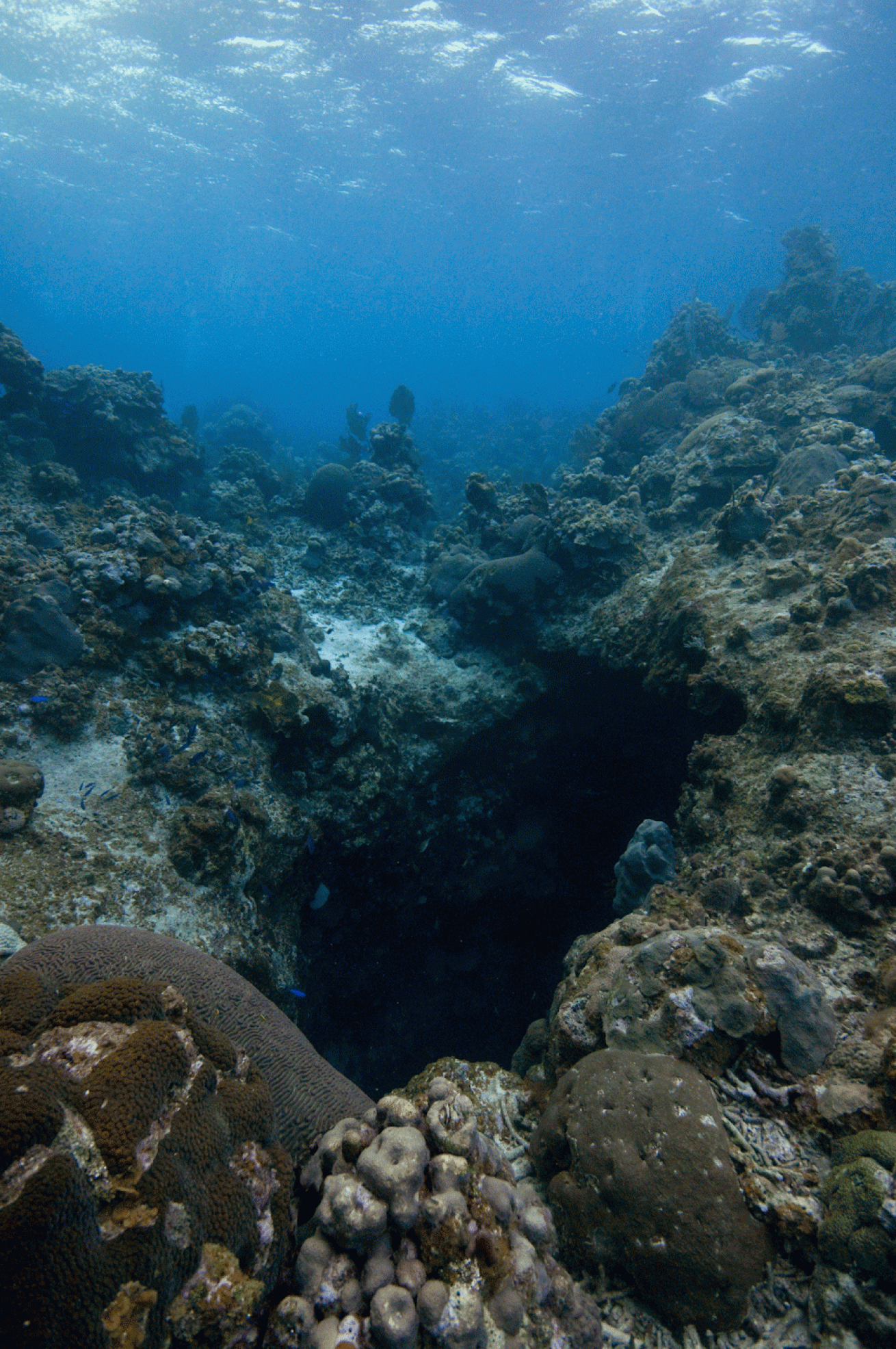
The reef and wall architecture at Hole in the Wall — with its exploration-worthy swim-though, shallow reef punctuated by coral heads and the occasional pinnacle or large coral mound — is typical of many sites off Eleuthera, including Tunnel Rocks, Cut-Through City, Jake's Hole, Split Coral Head and Cave Rock.
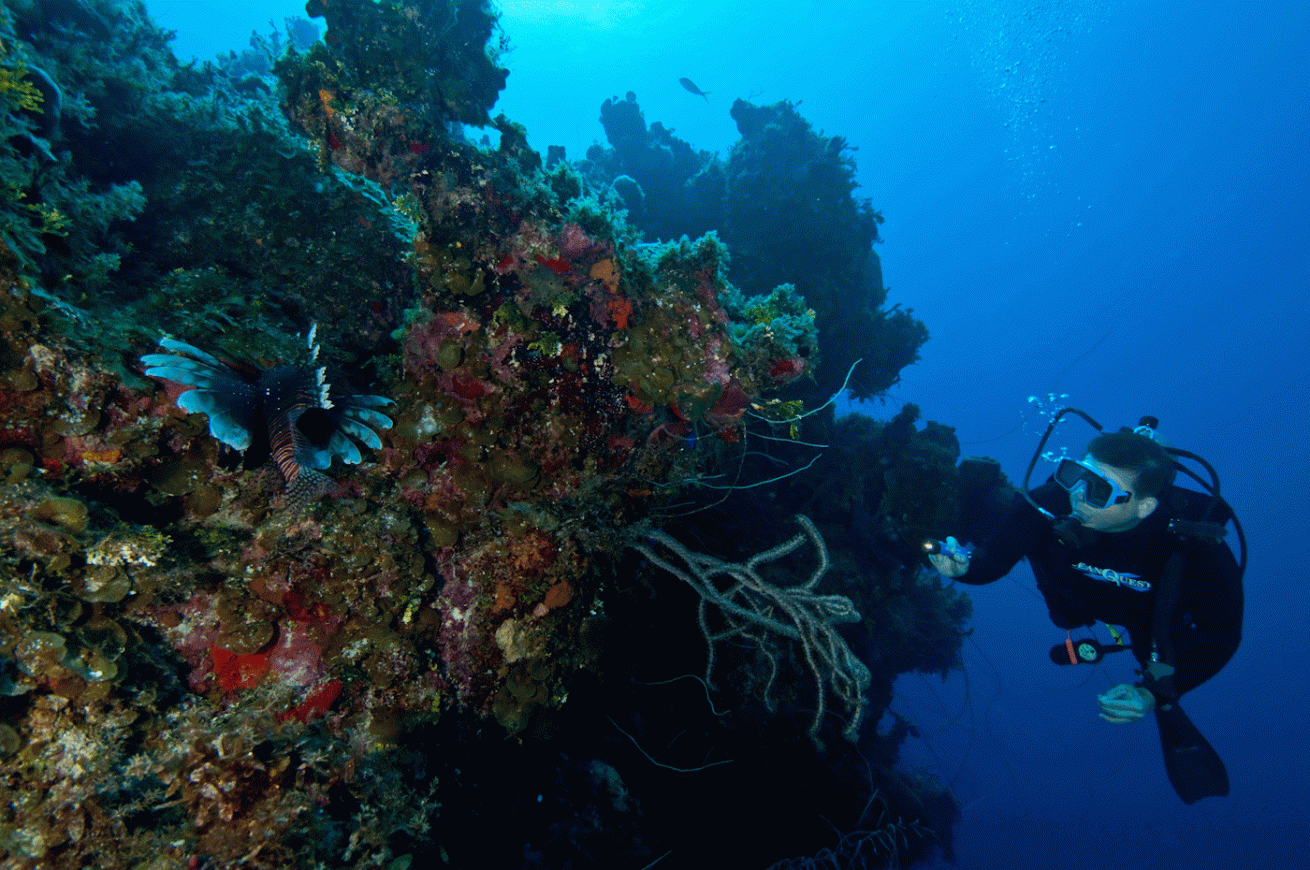
Aqua Cat always makes its night dive on the same shallow site that is the fourth dive, the second of the afternoon dives. That way, the underwater terrain is familiar and underwater navigation is pretty easy. We did night dives every night, just after dinner — speaking of dinner, Chef Kirk is an accomplished culinary artist, but best of all, he puts out an unbelievable spread for each meal of the day. He begins each day in the kitchen at 6 a.m. (for early risers like myself, a nice, large pot of coffee is ready). From poached eggs and waffles at breakfast to light and tender fish and pasta dishes at supper and a delightful dessert each evening, you will look forward to his meals. Your waistline, not so much.
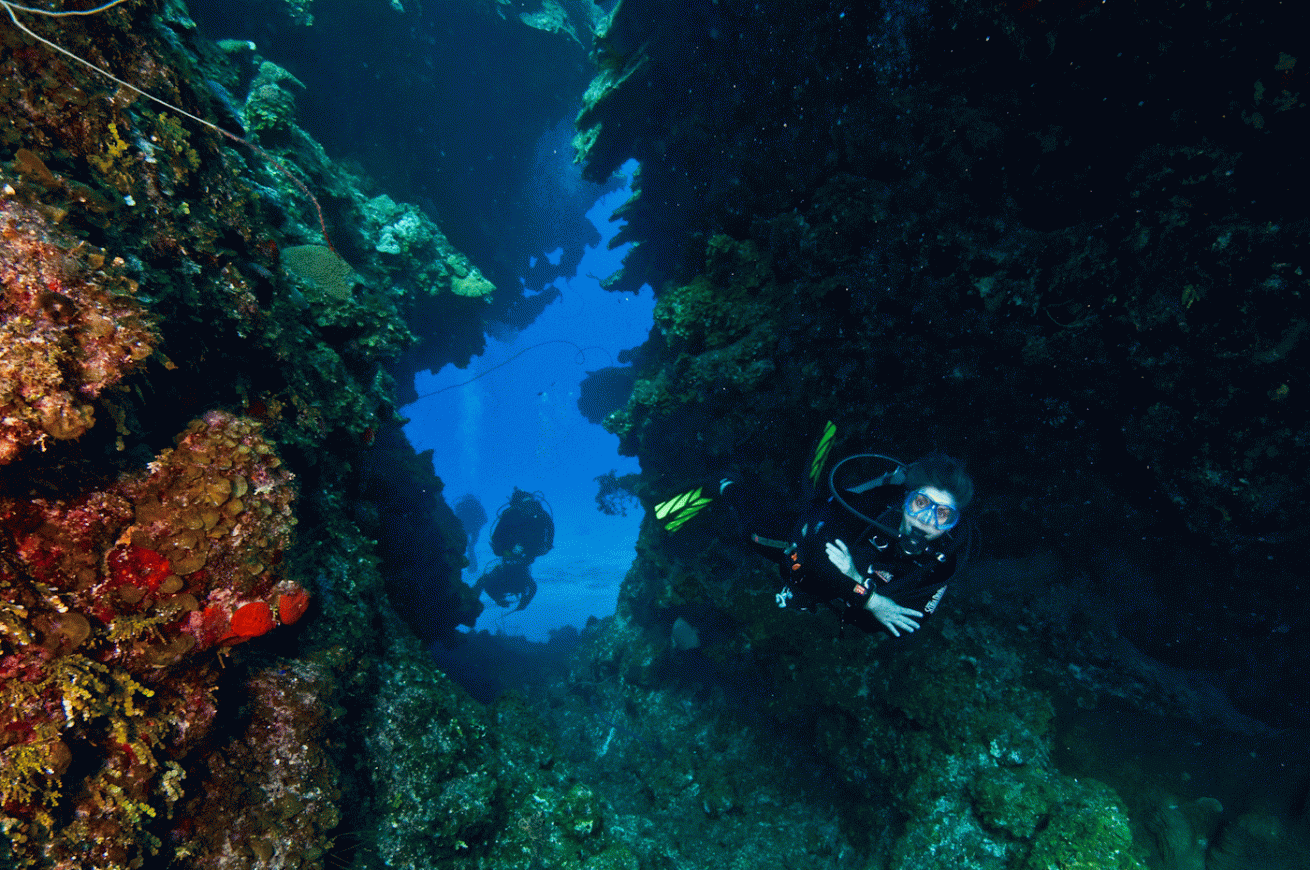
We do the shark-feeding dive at Split Coral Head because it offers a nice sandy bottom near the mooring where the crew attach the frozen block of discarded fish heads and parts. Caribbean reefs show up to the party and so do a decent number of Nassau grouper — boy, it was great to see as many Nassaus as we encountered during this trip. Not prolific numbers, but at least they were there. The photographers in our group got really awesome photos on this dive.
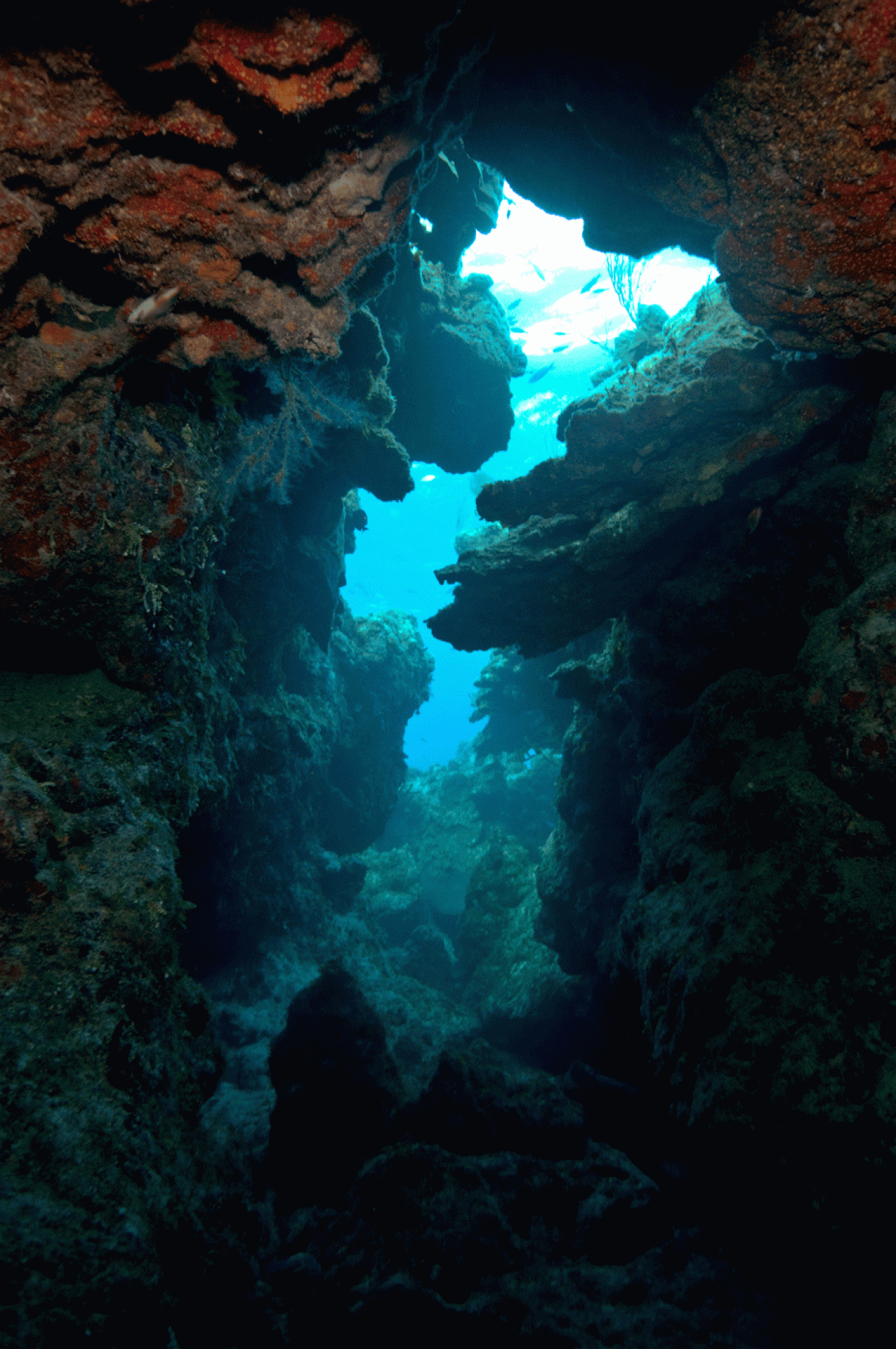
As a group, we were mostly split between Jake's Hole and Split Coral Head as our favorite sites. Jake's Hole has a fair amount of current in the "hole," and thus you don't actually dive in the hole. The hole is bracketed by two coral buttresses, shaped like parentheses. Because of all the fairly large coral structures and cuts in between, there's a fair amount of water movement that brings in a ton to see. Bring your camera on this dive! By the way, the crew sponsors a photo contest each week, and on the final night, you'll be treated to a slide show of staff photography and a video presentation, as well as participate in voting on the week's best guest images (in a few categories, including topside, macro and wide-angle).
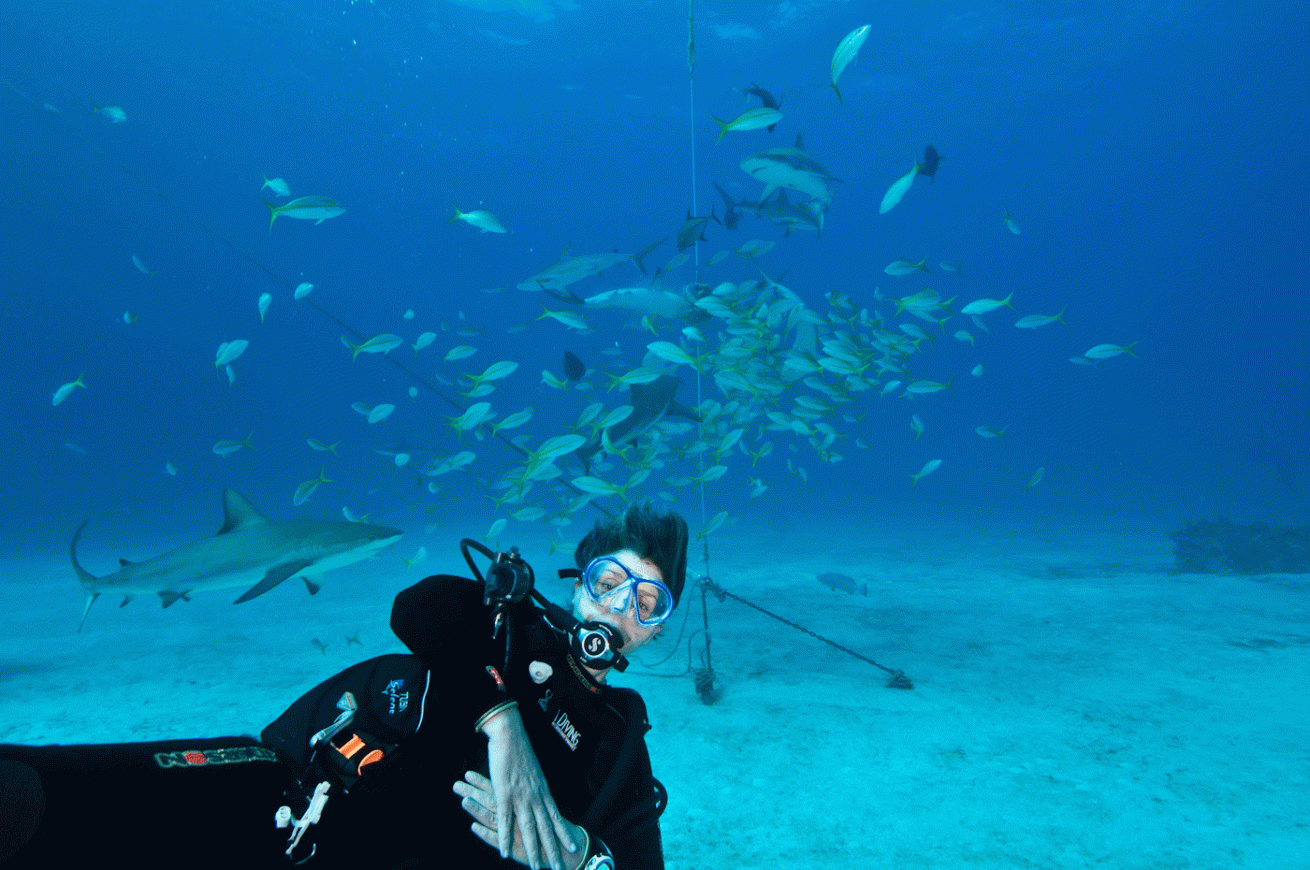
Split Coral Head was my personal favorite site. It features a huge coral mound with a crack that runs through it — you can spend the entire dive circumnavigating the mound and passing through the crack. Because this is where the Cat feeds the sharks, the Caribbean reefs are usually lurking nearby. And lots of bottom time if you stay near the top of the mound. Sweet.
Check out our June 2012 for the full report on the Aqua Cat's itinerary.

